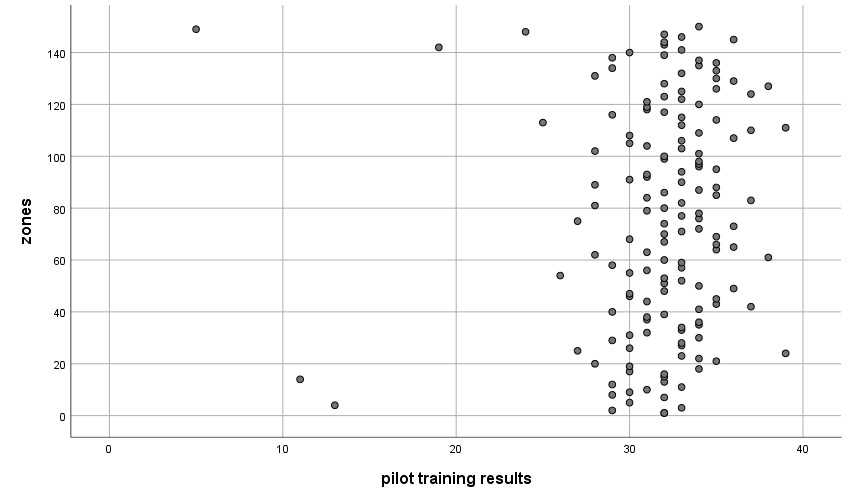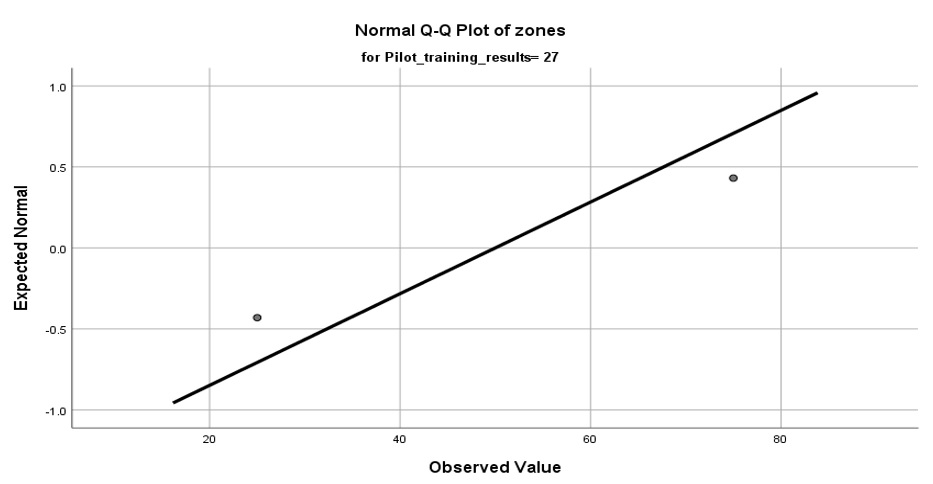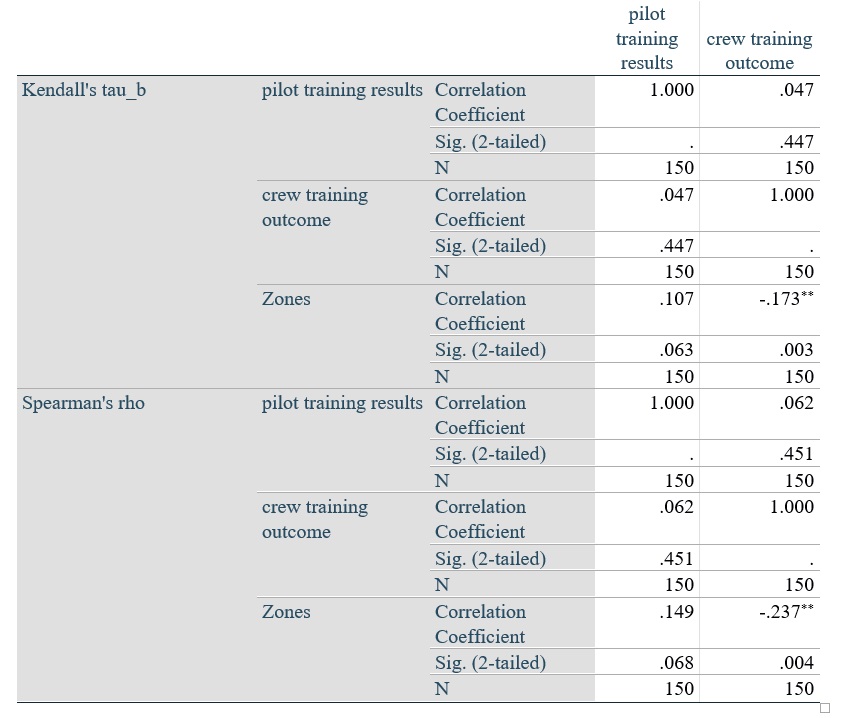Introduction
There is a need to understand how the aviation industry can prevent frequent aircraft cyberattacks by offering training to pilots and crew. A deeper analysis has been conducted on the sample collected from 150 different training centers across Triple E, Colorado. The analysis was performed later using the Pearson correlation coefficient for the two variables to show the relationship. A Pearson correlation measures linearity, and the relationship between two or more variables is considered very sensitive outliers. The techniques are therefore used to show a measure of associating variables. In the current study, the variables include crew and pilot training and aircraft cyber-attacks.
Previous studies have shown an increasing incidence of aircraft cyber-attacks across various parts of the globe. The specific trend has been witnessed in most European and Asian continents, with survey reports indicating that at least 67% of most aircraft experience the attacks. These attacks are either contributed through natural attacks or human factors such as the knowledge of viruses and computer operations (Johnson, 2019). In the Colorado cyber industry, complicated computer technology has recently been used to manage the frequent attacks on most airplanes. However, this strategy has not borne any fruitful results as more technological advancements have been developed by cyber attackers (Patel, 2017). Therefore, the most current approach involves training the crew and pilots to combat the common threats associated with aircraft cyberattacks.
Therefore, this study is relevant since it offers solutions to various aircraft industry management on the best practices to reduce these frequent attacks. The results from this study would be helpful since the administration and the aviation industry would be able to apply the essential findings and recommendations in devising the mechanism for effectively managing cyber threats. The Pearson correlation analysis specifically would assist in relating the pilot and crew training against the cyber-attacks as it aims at finding the relationship between the two variables.
Data Source
The data set of this study was collected from the information and data available in the Federal Aviation Administration (FAA) portal and, specifically, the data from 2015 to 2020 on the recent patterns and trends of aircraft cyber-attacks. The data collected was from 150 Triple E, Colorado aviation industries, coded as zones for straightforward interpretation. The data showed the different performance results when pilots and crew were conducted from various institutions. The descriptive statistics showing median, mean, standard deviation, and variance was computed from the data collected from the FAA statistics. In addition, the scatterplot and Pearson correlation coefficient were analyzed and presented respectively from the analyzed data using SPSS. The relationship between the two variables was then demonstrated using graphs and tables.
Verification of Statistical Assumptions
The key assumptions underpinning this study were based on the linearity, random and stratified sampling, and independence of variables. The random sample was formulated from a data set of 150 items collected randomly from the aviation industry in Triple E, Colorado, and then entered into the SPSS software. This assumption, therefore, demonstrates that the whole data under study would be 150 items that show the correlation between each other. Besides, the independence of the variables was observed, and it was assumed that there would be non-interference between the variables and there was no overlapping between the data items in the study. The two variables include; crew and pilot training against aircraft cyber-attacks. The linearity between the data set showed that the variables had a relationship, and a linearity line (best line of fitness) was later drawn in between the variables. This line is shown in figure 1, indicating the scatter plot.

Research Question
What relationship is between pilot and crew training and aircraft cyberattacks in Triple E, Colorado?
Hypothesis
- H0: P=0 There is no significant relationship between pilot and crew training and aircraft cyberattacks in Triple E, Colorado
- H1: P≠1 There is a significant relationship between pilot and crew training and aircraft cyberattacks in Triple E, Colorado.
Population/Sample
The study population focused on the Triple E, Colorado aviation industry, where 150 different institutions were sampled, and the result was analyzed. While considering the impact of aircraft cyber-attacks on the general aviation industry, the main aim of this analysis was to show the significant relationship between offering training to the crew and pilot and how to combat the frequent aircraft cyber-attacks in Colorado aviation. A random sampling technique was used to sample the 150 institutions. In addition, the crew training outcomes and the pilot training results were recorded from the various learning institutions. The simulation of this data indicated that more than 150 aviation centers met the analysis criteria, and they would be analyzed to show the relationship between the variables. The data set was exported to.XML format and then analyzed in the SPSS software to compute the correlation coefficient and the descriptive statistics.
Operational Definitions
The pilot training results indicate the performances of every pilot when training was conducted based on their preparedness to handle the frequent attacks. In addition, the training was based on the preventive measures available across the various aviation industries in Colorado. The crew training outcomes showed each crew member’s results when the training was conducted among the various learning institutions in Colorado. The dependent variable, represented by the aircraft cyber-attacks, indicated the various threats exposed to the airlines and aircraft in the current generations. The cyber-attacks include the theft of vital data in airplanes and access to sensitive information by cybercriminals across the aviation industry (Federal Aviation Administration, 2017).
Data Analysis
The SPSS software was used to perform the analysis and conduct various tests on the data collected. The linearity between the variables was demonstrated using the scatter plot, which indicated the relationship between the independent and dependent variables. The scatter plot was shown in figure 1, which showed a positive relationship existed between the crew training results and the pilot training outcomes. Therefore, this relationship demonstrated a general significance between training and combating aircraft cyber-attacks. In addition, a descriptive statistic was used to demonstrate the relevance of the data set in the study. The descriptive statistics included means, median, standard deviation, and variances. The test of normality was conducted by plotting the Q-Q plots. Pearson Correlation was also performed to show the significant relationship between the variables and test whether there was a statistical correlation between the pilot and crew training and the aircraft cyberattacks.
Data Interpretation
As shown in figure 1 above, the scatter plot demonstrated a positive relationship between pilot training and combatting the aircraft cyber-attack. The line in the graph, as plotted showed that a positive relationship exists between the two variables. The scatter plot slopes at a minimal range, indicating a slightly different relationship between the variables. When the R2 is computed between the slope, it indicates a strong connection between the independent and dependent variables. The Q-Q plots indicated that the data set was normally distributed. The Pearson Correlation coefficient, as indicated below, shows that there were statistically significant results from the two variables with r (150) =.149, p ≤. 05. Therefore, the computed results show a significant correlation between pilot and crew training and aircraft cyber-attacks.
Summary of Research Findings



Conclusion
The study’s analysis results indicate a significant relationship between the crew and pilot training and combatting the aircraft cyberattacks in Triple E, Colorado. The computed data showed a high correlation in positive results from the Pearson correlation coefficient, which indicated the R2 of.145 with P<0.5. Therefore, the results indicate that when training is offered to both the crew and pilots, the frequent and rampant cyberattacks on aircraft would significantly decline. Therefore, the various aviation industries should implement various policies and mechanisms to conduct training and impart knowledge to the aviation players, which would assist in reducing frequent attacks. Therefore, future studies would focus on researching the effectiveness of implementing regular training to ensure that the attacks decline and are entirely eradicated.
References
Johnson D. P. (2019). Civil aviation and cybersecurity. Honeywell Aerospace Advanced Technology, 56-59. Web.
Federal Aviation Administration. (2017). Aircraft cybersecurity: The pilot’s perspective. Air Line Pilots Association, 1-8.
Patel, R. (2017). Managing cybersecurity risk in weapon systems. Aircraft Systems Authorizing Official, US AIrforce, LCMC, 36-46.